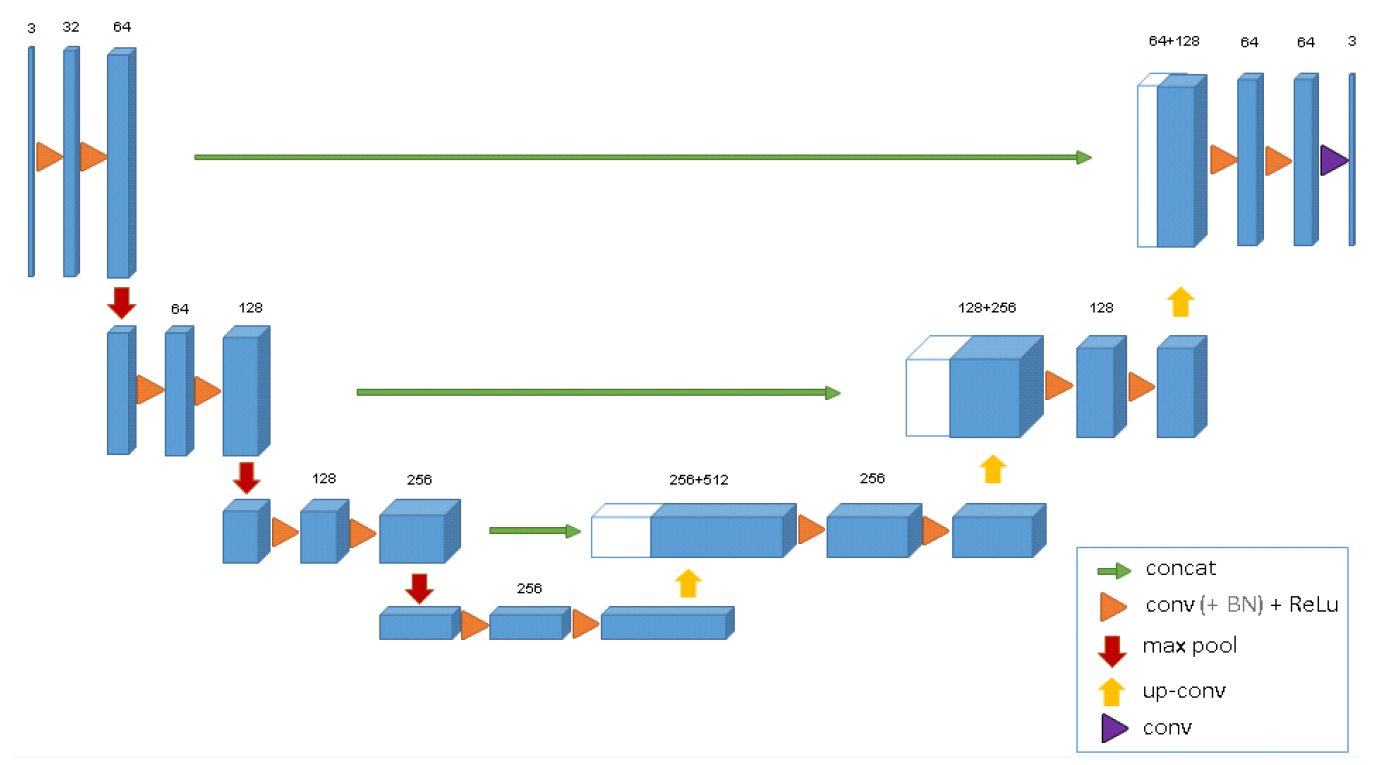Pytorch implementation of 3D UNet
This implementation is based on the orginial 3D UNet paper and adapted to be used for MRI or CT image segmentation task
Link to the paper: https://arxiv.org/pdf/1606.06650v1.pdf
Model Architecture
The model architecture follows an encoder-decoder design which requires the input to be divisible by 16 due to its downsampling rate in the analysis path.

Dataset
The Dataset class used for training the network is specially adapted to be used for the Medical Segmentation Decathlon challenge.
This dataset contains several segmentation tasks on various organs including Liver Tumours, Brain Tumours, Hippocampus, Lung Tumours, Prostate, Cardiac,
Pancreas Tumour, Colon Cancer, Hepatic Vessels and Spleen segmentation.
- Please also note that in the case which the task contain more than 2 classes (1: for foreground, 0: for background), you will need to modify the output
of the model to reshape it to the size of the groundtruth mask in train.py file.
The link to the dataset: http://medicaldecathlon.com/
- The Dataset class uses Monai package for reading MRI or CT and also applying augmentations on them in the transform.py file. You can modify the applied
transformation in this file according to your preferences.
Configure the network
All the configurations and hyperparameters are set in the config.py file.
Please note that you need to change the path to the dataset directory in the config.py file before running the model.
Parameters:
-
DATASET_PATH -> the directory path to dataset .tar files
-
TASK_ID -> specifies the the segmentation task ID (see the dict below for hints)
-
IN_CHANNELS -> number of input channels
-
NUM_CLASSES -> specifies the number of output channels for dispirate classes
-
BACKGROUND_AS_CLASS -> if True, the model treats background as a class
-
TRAIN_VAL_TEST_SPLIT -> delineates the ratios in which the dataset shoud be splitted. The length of the array should be 3.
-
TRAINING_EPOCH -> number of training epochs
-
VAL_BATCH_SIZE -> specifies the batch size of the training DataLoader
-
TEST_BATCH_SIZE -> specifies the batch size of the test DataLoader
-
TRAIN_CUDA -> if True, moves the model and inference onto GPU
-
BCE_WEIGHTS -> the class weights for the Binary Cross Entropy loss
Training
After configure config.py, you can start to train by running
python train.py
We also employ tensorboard to visualize the training process.
tensorboard --logdir=runs/

 Datasets
Datasets
 Models
Models